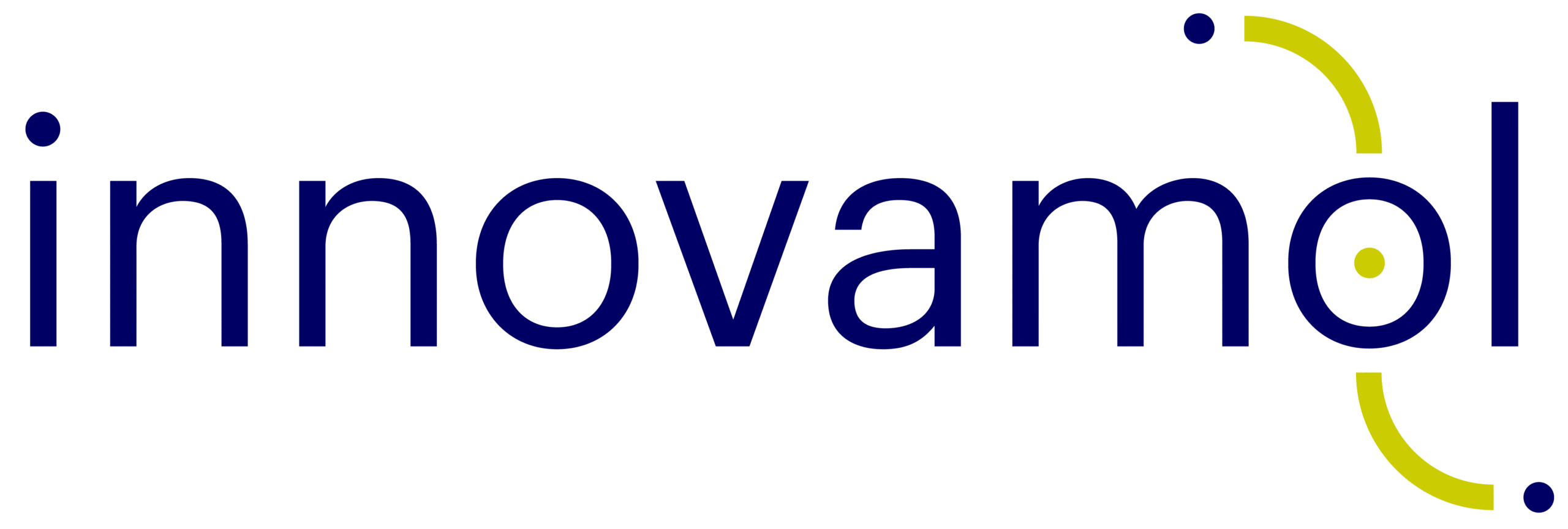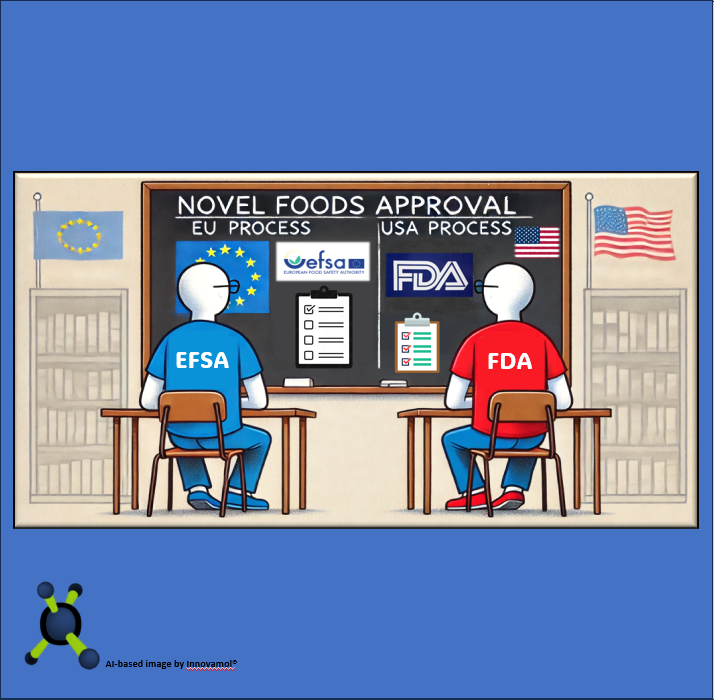Understanding the regulatory procedures for novel food approval can be essential for companies aiming to entering in different markets. In this Innovablog we wanted to focus on the European Union (EU) and the United States (USA) markets that, while they share a commitment to food safety, their regulatory frameworks and procedures for approving novel foods are pretty different.
As previously mentioned in one of our latest articles, in the European Union, the Regulation (EU) 2015/2283 defines novel foods as those not consumed significantly by humans in the EU before 15 May 1997. The approval process for novel foods in the European Union is centralised, starting with an application to the European Commission. This application must include detailed information about the novel food, its production process, compositional data, and proposed uses. The European Food Safety Authority (EFSA) then conducts a thorough safety assessment, evaluating potential risks to animal and human health such, as toxicity and allergenicity, and the ecotoxicity – this is now framed more clearly under the updated 2025 guidance, focusing on both the safety of the food itself and its potential environmental impact. The new guidance also specifies how to account for innovations like cell culture-derived foods. Public consultations may also be part of the process, allowing stakeholders and interested population to provide input, suggestions and opinions in order to make the novel food introduction process more transparent as possible. Based on EFSA’s opinion, the European Commission drafts a regulation to authorise the novel food, which must be approved by EU member states. Recently, has been published by EFSA a new guidance for novel food approval. A key update in EFSA’s new guidance is a more precise definition of the required data and improved clarity on scientific submissions. This aims to reduce delays in processing by ensuring higher-quality applications from the start. Detailed information about this process can be found on the European Commission’s website. Although the process already follows the highest standards of scientific assessment, it is not without criticism, as recently demonstrated by a protest organized by an Italian farmers’ association calling for increased transparency.
On the other hand, in the USA, novel foods are typically reviewed under existing frameworks rather than through a distinct regulatory category. The Food and Drug Administration (FDA) oversees this process, often through the Generally Recognized as Safe (GRAS) notification program. Companies aiming to GRAS status for a novel food ingredient must demonstrate its safety based on scientific evidence and a consensus among qualified experts. Alternatively, if an ingredient is not GRAS, pre-market approval process is required trough a food additive petition which involves comprehensive safety data and information on the proposed uses. For dietary supplements, a New Dietary Ingredient (NDI) notification must be submitted to the FDA 75 days before marketing. The FDA also offers a voluntary consultation program for developers of novel foods, particularly those derived from biotechnology. Recently, the U.S. Department of Health and Human Services (HHS), under the current US administration, directed the FDA to explore rulemaking aimed at eliminating the pathway that allows companies to self-affirm the safety of food ingredients without FDA oversight. This marks a potential shift in the regulation of novel foods and ingredients, particularly those entering the market under the self-GRAS route. Detailed guidelines and processes for novel food approval are available on the FDA’s website.While both the EU and USA have processes to ensure the safety of novel foods, the diverse paths reflect their regulatory philosophies. The EU’s centralised approach through EFSA (risk assessor) and the European Commission (risk manager) offers a uniform approval process across all member states for all the novel foods aspiring to be introduced in the market. On the other hand, the USA’s flexible pathways, such as GRAS, food additive petitions and NDI notification, provide multiple routes depending on the nature of the novel food — though the recent moves of the new US administration appear to oppose certain products (e.g. ultra-processed foods, GMO ingredients, cultivated meat, and plant-based foods), mainly for political reasons. It should be noted that EFSA’s updated guidances aims to improve this process further by minimising the need for additional clarifications and consultations with applicants, thus streamlining the overall evaluation timeline. Furthermore, EFSA’s public consultations represent an added valuable feature in the EU process, enhancing transparency and stakeholder engagement, whereas the USA relies heavily on expert consensus and FDA reviews. In terms of timeline, the EU’s approach is normally more time-consuming due to its comprehensive evaluation stages, while the USA’s GRAS process can be quicker but requires always a robust scientific consensus.
As mentioned before, understanding these differences and being constantly updated is crucial for food innovators that need to overcome the regulatory challenges to launch a novel food in the market. By aligning with the respective regulatory requirements, companies can ensure successful market entry and consumer safety in both economic areas.
At Innovamol, we support companies with tailored regulatory intelligence, tracking policy changes in real time and helping you anticipate market disruptions before they happen. Ready to future-proof your product strategy? Contact us and discover how our insights can give your business a competitive edge.
“Science is nothing but a perversion if it does not have as its ultimate goal the betterment of humanity” – Nikola Tesla

